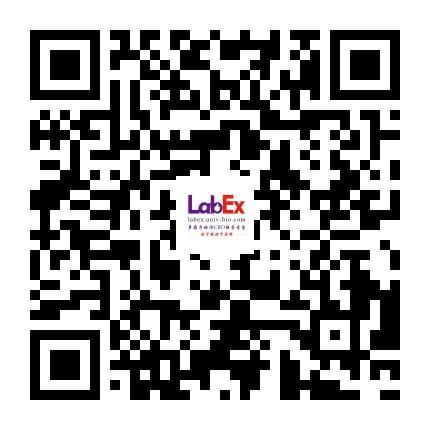Acupuncture at ST36 ameliorates experimental autoimmune encephalomyelitis via affecting the function of B cells
针灸,B细胞,实验性自身免疫性脑脊髓炎,交感神经,β2-AR-cAMP信号通路,Acupuncture, B cell, Experimental autoimmune encephalomyelitis, Sympathetic nerve, β2-AR-cAMP signaling pathway LabEX支持文献- Int Immunopharmacol
- 2023
- 5.6
- 2023 Oct:123:110748
- Mouse
- MSD
- 自身免疫性疾病
- 组织
- 免疫/内分泌
- 自身免疫性疾病
Abstract
Acupuncture at ST36 can alleviate a variety of autoimmune diseases, including experimental autoimmune encephalomyelitis (EAE), while the specific mechanism for the treatment of EAE is not clear. In this study, we found that acupuncture at ST36 can significantly increase the excitability of splenic sympathetic nerve, and promote the differentiation of peripheral B and CD4+T cells in the anti-inflammatory direction. After blocking the splenic sympathetic nerve with 6-OHDA, this anti-inflammatory effect of acupuncture is partially reversed. In addition, the results of western blot and qPCR showed that acupuncture at ST36 simultaneously activated the β2-AR-cAMP signaling pathway in the splenic B and CD4+T cells, and this activation was more significant in B cells. In vitro, when CD4+T cells were cultured alone, norepinephrine (NE) had no significant effect on their differentiation. While in the presence of B cells, NE significantly promotes the anti-inflammatory differentiation of B and CD4+T cells. Therefore, the above results reveal that acupuncture can relieve EAE by stimulating the sympathetic nerves of spleen, mainly through acting on B cells to mediate anti-inflammatory effects, and indirectly affecting the function of CD4+T cells.
Keywords: Acupuncture; B cell; Experimental autoimmune encephalomyelitis; Sympathetic nerve; β2-AR-cAMP signaling pathway.
LabEx Luminex平台助力探索多发性硬化症的针灸治疗效果
本周为大家带来的文献为发表于Int Immunopharmacol. (IF: 5.6)的” Acupuncture at ST36 ameliorates experimental autoimmune encephalomyelitis via affecting the function of B cells”。本文使用了LabEx提供的MSD检测服务。
多发性硬化症(MS)是一种以中枢神经系统(CNS)的白质和灰质发生炎性脱髓鞘为特征的自身免疫性疾病。全世界有250多万人患有这种疾病,其中大多数人的年龄在20-40岁之间。然而,多发性硬化症的治疗目前仅限于对症治疗,包括糖皮质激素、免疫抑制剂和B细胞缺失疗法。
随着补充和替代医学疗法的发展,其对许多疾病的治疗效果已得到证实。其中,针灸作为一种常用的治疗方法,在多发性硬化症患者中的使用率为7.2 ∼ 21%。针灸对多发性硬化症的疗效也已得到临床证实,但具体机制尚不明确。众所周知,免疫细胞上存在丰富的神经递质受体,如胆碱能受体、肾上腺素能受体(AR)、多巴胺受体、GABA受体等。因此,针灸是否能通过激活交感神经系统和调节免疫细胞功能来治疗EAE尚不清楚。本研究发现,针刺 ST36 可显著提高脾交感神经的兴奋性,促进外周 B 细胞和 CD4+T 细胞向抗炎方向分化。
LabEx提供的MSD检测服务:
样品在3000g转速下离心10分钟,收集上清液。将300 µl链接剂和200 µl相应的生物素标记抗体混合均匀,室温孵育30分钟。然后向该混合物中加入200 µl终止缓冲液,混匀后室温孵育30分钟。然后,在U-plex MSD板上涂抹制备好的抗体(50 µl/孔),室温下孵育 1小时。然后从每个烧瓶中取50 µl至另一个 EP 管中,用稀释剂稀释至250 µl为最高浓度点,依次稀释4倍,并设7个标准和1个空白。然后吸取60 µl的检测抗体,用稀释剂3稀释至3 ml,作为检测抗体稀释液。另外,准备 1*PBS (0.05% Tween-20) 作为洗涤缓冲液和 2* 读取缓冲液。
为了观察针灸是否能通过影响上述炎症过程来缓解EAE,研究者在发病高峰期通过MSD法检测了血清中多种细胞因子的浓度。我们发现针灸可以下调一些促炎细胞因子(IP-10、MIP-3α、IL-17F、IL-23、IL-33、GM-CSF、IFN-γ、IL-12p70、IL-6和IL-12/IL-23p40),上调一些抗炎细胞因子(IL-16、IL-21、IL-10、IL-27p28/IL-30、IL-4、EPO、VEGF-A、IL-5和IL-15)。

MSD 检测法用于检测血清中细胞因子的浓度。
重要发现:
-针刺可延缓EAE的发生,促进外周B细胞和CD4+T细胞向抗炎方向分化。
-用6-OHDA去脾交感神经可逆转针灸的作用。
-针刺可激活 CD4+T 和 B 细胞中的β2-AR-cAMP 信号通路。
-在 B 细胞存在的情况下,NE 可促进 CD4+T 细胞向抗炎方向分化。
本网站销售的所有产品及服务均不得用于人类或动物之临床诊断或治疗,仅可用于工业或者科研等非医疗目的。







 沪公网安备31011502400759号
沪公网安备31011502400759号
 营业执照(三证合一)
营业执照(三证合一)


